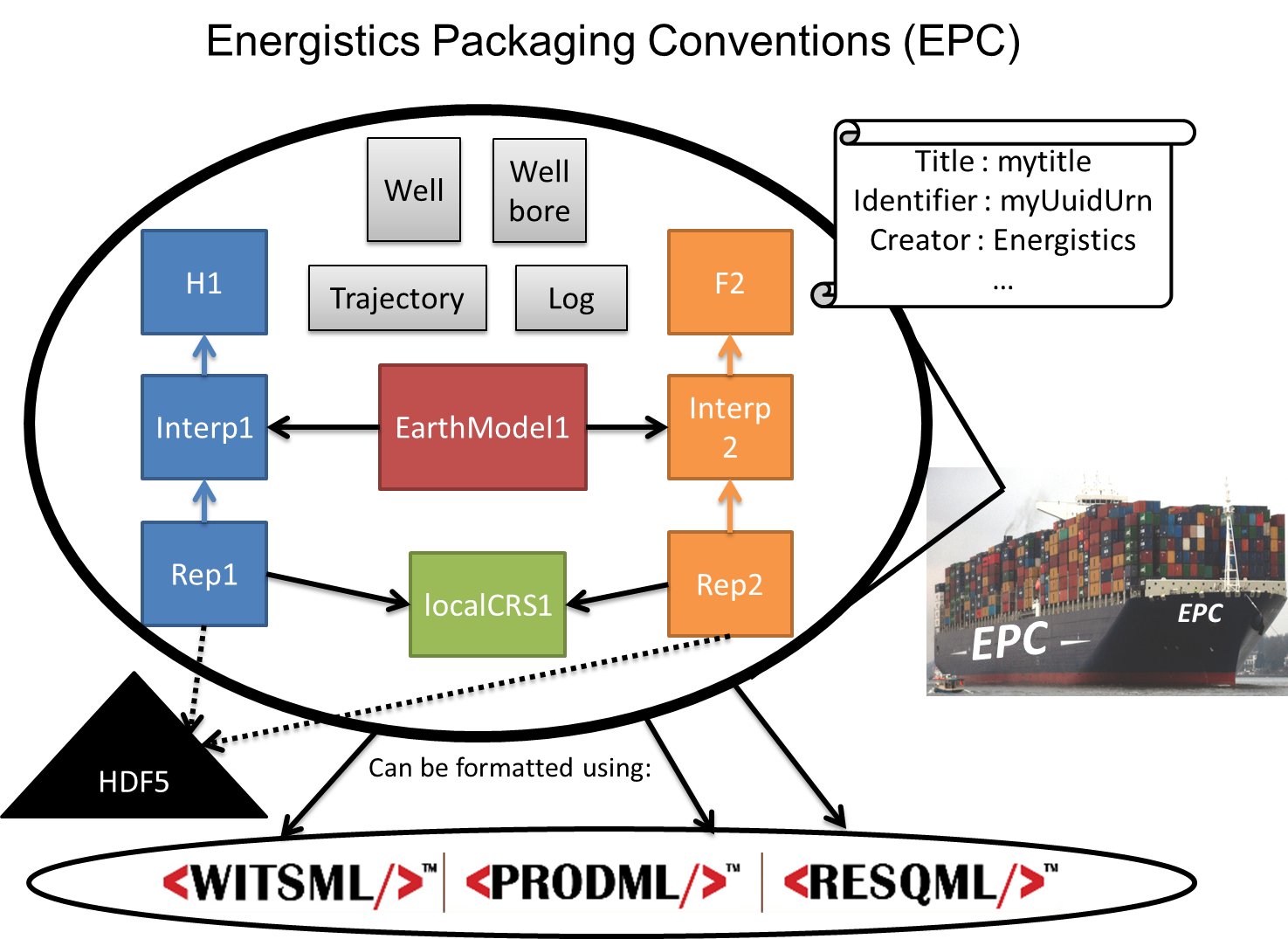3.2.6 EPC File for Grouping Data Files
| Topic Version | 1 | Published | 09/11/2015 | |
| For Standard | RESQML v2.0.1 | |||
Use of an object-relationship data model and individual data objects requires a way to package together all related "parts" as a single, coherent RESQML package for data exchange. This packaging is done using the Energistics Packaging Conventions (EPC), which was introduced in Section 2.2.1 Energistics Packaging Conventions (EPC) . The collective object is referred to as an EPC file. For more information on EPC, see the Energistics Packaging Convention Specification.
Table 3.2.6-1 lists the types of files that can be contained in an EPC file. Figure 3.2.6-1 shows a high-level overview of the relationship among these files.
|
EPC Part |
Definition, Purpose, and Requirements |
|---|---|
|
XML data objects |
XML data objects defined in RESQML V2.0 or data objects from other Energistics data-exchange standards, such as WITSML or older versions of RESQML, may be included. These files use the file extension: .xml |
|
EpcExternalPartReference |
Any file that is part of an EPC file but stored externally to the EPC file must have an external part reference that points to the external part. For example, because an HDF5 file is designed for random access (not streaming) and can already compress its data sets, RESQML requires that an HDF5 file(s) be stored outside of an EPC file. However, to accurately maintain all relationships, the EPC file requires use of an external reference to the HDF5 file. For more information about HDF5 files, see 3.2.6.1 HDF5 Files and EPC External Part Reference . |
|
Other types of files |
Optionally, other files that contain additional, informal information relevant to the contents of the EPC file, such as these listed below. As a guideline these files are stored in a folder named "media".
|
|
_rels |
Describes the relationship(s) between parts in the EPC file. |
|
[ContentType].xml |
Special file required for EPC to associate file name extensions used in the package with specific mime content types. |
